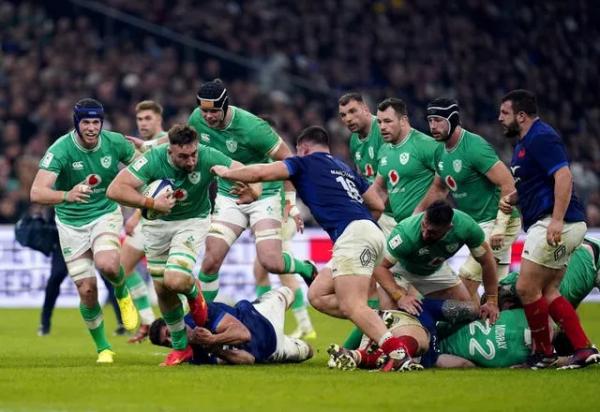
Ireland assistant coach Mike Catt insists there is plenty more to come from rookie fly-half Jack Crowley ahead of his maiden Guinness Six Nations appearance in Dublin.
Crowley celebrated his full debut in the championship by overcoming a few kicking errors to help his country register a thumping 38-17 round-one win away to France.
The 24-year-old is expected to retain the number 10 jersey for Sunday’s clash with Italy at the Aviva Stadium as head coach Andy Farrell searches for Johnny Sexton’s long-term successor.

England World Cup winner Catt believes “nothing fazes” Crowley and was impressed by the Munster player’s response to a nervy start in Marseille.
“It’s something Andy has been driving over the past number of years,” Catt told the Irish Mirror.
“It’s ‘don’t get in the way of yourself, don’t worry about it. It’s gone’.
“For a man with inexperience, to block it out like that is very good. Nothing fazes him, like a lot of the boys in the team.
“We still haven’t seen the best out of Jack, there’s still a lot more to go, but it’s not a bad start.”
Crowley made his Six Nations debut with a three-minute cameo in a 34-20 victory in Rome last February.
Following 13 points at Stade Velodrome last Friday, he is likely to be given far more time to shine against Italy this weekend, with Farrell set to name his team on Friday afternoon.
Ireland, who have won 23 of their previous 24 Six Nations clashes against the Azzurri, are strong favourites to extend their winning run on home soil to 17 matches.

Back-row forward Jack Conan feels the demolition of pre-tournament favourites France showed a “snippet” of how good the reigning Grand Slam champions can be as they ruthlessly responded to the disappointment of their World Cup quarter-final exit in October.
“We had already closed the chapter on the World Cup but for our next performance to be a good one and get a win was huge,” Conan, who came on as a replacement against Les Bleus, said, according to RTE.
“I don’t think there was a hangover from the World Cup but it’s definitely important that you are not backing up losses even though there’s months in between it.
“It was a good start to the campaign. There was so much energy and freshness to the squad from the World Cup.
“The lads bounced into camp and were so eager to get back to winning ways and to show how good we can be and that was a snippet of how good we can be at the weekend.”
Sourse: breakingnews.ie